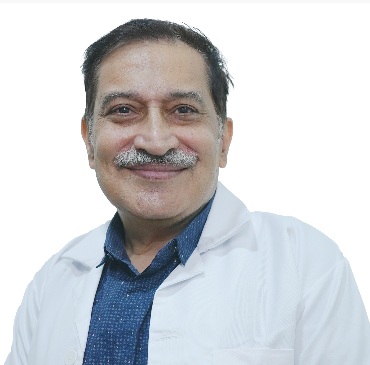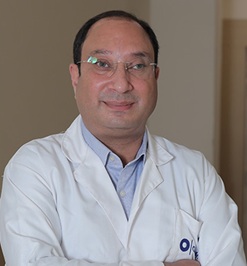Synovectomy Surgery : Procedure, Cost, Recovery & Risks

Treatment Duration
15 Minutes
------ To ------45 Minutes
Treatment Cost
₹ 10,000
------ To ------₹ 70,000

Table of Contents
- What is Synovectomy?
- Who needs Synovectomy?
- How is Synovectomy Done?
- What Can You Expect Before the Synovectomy?
- What Can You Expect on the Day of the Synovectomy?
- What Can You Expect During the Synovectomy?
- What is Recovery and Post Op Care After Synovectomy?
- What are Risks and Complications after Synovectomy?
Synovectomy
You can check Synovectomy Cost here.
What is Synovectomy?
Synovectomy is a surgical procedure to remove a portion or whole of the synovium. Also known as the synovial membrane, the synovium is a connective tissue that lines the inside of the joints, tendons, and bursae. Synovectomy is an ideal procedure for treating synovitis, which occurs when the synovial membrane gets inflamed. Open, radiation, chemical, and arthroscopic synovectomies are the surgical options for removing damaged synovium from the knee, shoulder, or elbow.
Expert Doctors (10)
NABH Accredited Hospitals (10)


Who needs Synovectomy?
People with the following conditions require a synovectomy procedure:-
- Rheumatoid arthritis: An autoimmune or inflammatory disease in which a person’s immune system attacks the healthy cells in their body, usually the joints. This causes inflammation in the affected area.
- Psoriatic arthritis: A chronic and progressing condition that affects people with psoriasis. The condition causes pain and swelling of the joints.
- Septic arthritis: Also known as infectious arthritis, it is an infection caused by bacteria that spreads to the joint fluid and tissues.
- Haemophilia: A bleeding disorder where the blood doesn’t clot properly. Repeated episodes of bleeding can result in chronic joint oedema and disability.
- Synovial chondromatosis: A rare, non-cancerous tumour that arises in the lining of the joint, mostly the lining of the knee joint.
- Pigmented villonodular synovitis: A condition that causes excess growth and inflammation of the synovium.
However, synovectomy is effective only when some cartilage is left in the joint. The doctor may recommend a different procedure if the cartilage has worn away completely. Mostly, synovectomy is performed on a knee, but the surgeon may also perform the surgery on the shoulder, elbow, ankle, hip, or wrist.
How is Synovectomy Done?
The synovectomy procedure can be performed through an open or an arthroscopic method.
Open Synovectomy
- The surgeon will make a skin incision near your joint.
- He/she will carefully dissect the soft tissue to identify the abnormal synovial membrane layer.
- Through the opening, he/she will remove part or whole of the synovium.
- He/she will also remove loose bodies or debris in the joint cavity.
- Next, the surgeon will excise any adhesions or scar tissue.
- Finally, he/she will suture back the soft tissue and the skin and cover the wound with a compressive dressing.
Arthroscopic Synovectomy
- The surgeon will make 3-4 small incisions on the skin near the joint.
- Through one of these incisions, the surgeon will insert an arthroscope (a thin tubular instrument with a camera at the end) to clearly view the joint’s interior.
- Through the remaining incisions, he/she will insert small surgical instruments.
- The surgeon will cut and remove the excess synovium using these surgical instruments.
- Once the procedure is completed, he/she will close the skin incisions with sutures and apply a compressive dressing on the wound.
The two other procedures for synovectomy include:-
- Radiation Synovectomy: A less invasive procedure in which the surgeon injects a radioactive substance into your joint, causing the synovium to break down.
- Chemical Synovectomy: The surgeon injects strong drugs into the joint to break down the synovium.
What Can You Expect Before the Synovectomy?
Consultation and Evaluation
- You will consult an anaesthesiologist for a Pre-Anaesthetic Checkup (PAC).
- The doctor will evaluate your medical history and examine the affected joint’s damage and range of motion.
- The doctor will order imaging tests such as an X-ray, MRI, ultrasonography, and scintigraphy for detailed joint images.
- In addition, you will undergo other preoperative tests, including:-
- Blood tests
- Virology screen (viral tests for hepatitis and HIV)
- Urine test
- Liver function test
- Chest X-ray
- Electrocardiogram
Inform your doctor about all your medications, including herbs and supplements.
The doctor will briefly explain the procedure, hospital stay, and insurance formalities.
Restrictions
- The doctor will ask you to stop taking certain blood-thinning medications like aspirin and ibuprofen two weeks before the procedure.
- He/she will ask you to quit alcohol and smoking as it can slow the healing process.
- You will need to fast for 8-10 hours before the surgery.
Medications
The doctor may prescribe a sleep medication for the night before the procedure.
What Can You Expect on the Day of the Synovectomy?
- Your healthcare team will ask you to sign the consent formalities.
- Someone from the team will inform you about the change of clothes and removal of jewellery.
- The excess hair at the surgical site will be removed.
- The doctor will record your last meal.
- You will be given medicine to be taken with a sip of water.
- The anaesthesiologist will monitor your vitals, including heart rate, blood pressure, and breathing.
- The team will shift you to the OT room.
What Can You Expect During the Synovectomy?
- You will be made to relax on the operating table in the OT room.
- You may be given some sedation to help calm you down.
- The anaesthesiologist will start an IV line in your arms or hands for fluids and medications.
- He/she will administer local, regional, or general anaesthesia based on your PAC results.
- Someone from the team will clean the incision site with an antiseptic solution.
- The anaesthesiologist will monitor your vital signs throughout the surgery.
- Finally, the surgeon will perform an open or arthroscopic synovectomy based on the preoperative discussion.
- After the procedure is completed, he/she will close the incisions with stitches and apply a compression bandage over the wound.
What is Recovery and Post Op Care After Synovectomy?
In the hospital:-
- After the surgery, the team will shift you to a recovery room to monitor the effect of anaesthesia.
- The anaesthesiologist will monitor your vital signs, such as heart rate and blood pressure.
- Once the vitals are stable, the team will shift you to a general ward or room.
- The doctor will prescribe pain medications after the surgery to manage pain.
- If general anaesthesia was used during the procedure, you might not be given food or drinks for four to six hours after the procedure.
- You may get discharged from the hospital the same day as the procedure or one day after.
- Before discharge, the doctor will give you home care and follow-up instructions.
At home:-
- Wound Care
- You may take a shower 48 hours after the procedure.
- Do not take a bath or submerge your knee under water for a week.
- Medications
- You may feel a little discomfort after a synovectomy.
- The doctor will prescribe oral pain medications to manage joint pain and inflammation.
- Resting, icing, and elevating the joint can help reduce pain and swelling.
- Activity
- The doctor will ask you to move the joint as soon as possible to regain strength and flexibility.
- If the joint hurts too much, you may use a Continuous Passive Motion (CPM) machine to move the joint.
- If you had a synovectomy for your knee, the doctor would ask you to wear a cast after the procedure.
- You may also need to use slings or crutches to keep weight off the joint while it heals.
- You should be able to resume light activity within one to three weeks and more strenuous activities within six weeks.
- Physical Therapy
- You will start to work with a physical therapist a day or two after the procedure.
- The therapist will teach you exercises to improve muscle strength and joint function.
- Do not exercise more than the therapist recommends, as putting too much pressure could affect the joint’s healing.
First Follow-Up Appointment
Your doctor will typically schedule the first follow-up appointment 7 to 10 days after the surgery. During the visit, he/she will remove the sutures and evaluate the joint’s recovery.
What are Risks and Complications after Synovectomy?
Like any other surgery, synovectomy has the risk of the following side effects:-
- Infection
- Bleeding
- Scarring
- Reaction to anaesthesia
Complications related to synovectomy include:-
- Damage to ligaments and cartilage
- Blood vessel or nerve damage
- Joint stiffness
- Blood clots in the legs
Call your healthcare provider if you experience the following symptoms:-
- Fever over 101.5 degrees
- Pain that does not improve with medications
- Redness or swelling
- Numbness or tingling
- Discharge from the surgical area that continues for more than 24 hours
Last Updated on: 7 February 2025
Author
HexaHealth Care Team
HexaHealth Care Team brings you medical content covering many important conditions, procedures falling under different medical specialities. The content published is thoroughly reviewed by our panel of qualified doctors for its accuracy and relevance.
Latest Health Articles























